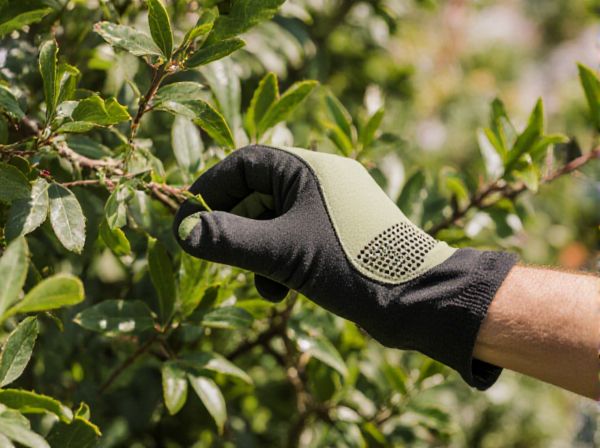
Pruning vs Thinning Illustration
Pruning involves selectively cutting branches to shape the plant, enhance growth, and improve flowering or fruit production. Thinning removes entire branches or stems to reduce density, increase light penetration, and improve air circulation. Both techniques promote plant health but serve different purposes depending on the plant's needs and desired outcome.
Table of Comparison
| Aspect | Pruning | Thinning |
|---|---|---|
| Definition | Selective removal of specific branches or stems to shape and control plant growth | Removal of entire branches or stems to reduce density and improve light and air penetration |
| Purpose | Enhance plant structure, promote flowering, and remove dead or diseased parts | Increase airflow, reduce crowding, and prevent disease by opening plant canopy |
| Effect on Plant | Stimulates growth in remaining branches, improves form | Reduces overall density, improves health by reducing competition |
| Timing | Typically done during dormancy or after flowering | Performed usually during growing season or before heavy growth |
| Tools Used | Pruning shears, loppers, saws | Pruning saws, loppers, hand pruners |
| Common Plants | Shrubs, fruit trees, ornamental plants | Fruit trees, dense shrubs, forest management |
Understanding Pruning and Thinning in Gardening
Pruning involves selectively cutting branches or stems to promote healthy growth, improve plant shape, and increase flower or fruit production. Thinning, on the other hand, removes entire branches or stems to reduce density and increase air circulation within the plant. Understanding when to prune versus thin helps gardeners maintain plant health and optimize sunlight exposure.
Key Differences Between Pruning and Thinning
Pruning involves selectively removing specific branches or parts of a plant to shape its structure, promote healthy growth, and enhance flowering or fruiting. Thinning refers to the process of removing entire branches or stems to reduce density, improve air circulation, and increase light penetration within the plant canopy. The key difference lies in pruning targeting individual growth points for precise control, while thinning aims to open up the plant by eliminating overcrowded or weaker branches.
When to Prune vs When to Thin Plants
Pruning is essential during the dormant season or early growth stages to remove dead or overgrown branches, encouraging healthy structure and vigorous growth. Thinning is best done in late spring or early summer to reduce overcrowding within the canopy, allowing better air circulation and light penetration. Understanding the distinct timing of pruning and thinning helps optimize plant health and productivity.
Benefits of Pruning for Plant Health
Pruning enhances plant health by removing dead, diseased, or damaged branches, preventing the spread of pathogens and promoting vigorous new growth. It improves air circulation and sunlight penetration within the canopy, reducing the risk of fungal infections and boosting photosynthesis efficiency. Proper pruning directs the plant's energy toward fruit and flower production, leading to stronger, more resilient growth.
Benefits of Thinning for Garden Growth
Thinning plants improves air circulation and reduces overcrowding, which minimizes the risk of diseases and pest infestations in the garden. This practice allows remaining plants to access more sunlight, nutrients, and water, promoting healthier and more vigorous growth. By selectively removing weaker or excess shoots, thinning enhances airflow and encourages robust root and foliage development essential for overall garden vitality.
Tools Required for Effective Pruning and Thinning
Effective pruning and thinning require specific tools to ensure plant health and optimal growth. Hand pruners, loppers, and pruning saws are essential for cutting branches of varying thickness, while gloves and protective eyewear safeguard against injury. For thinning, precision tools like bypass pruners and pole pruners enable selective removal of smaller stems and crowded growth without damaging the plant.
Best Practices for Pruning Different Plant Types
Pruning techniques vary based on plant types, where woody shrubs benefit from thinning cuts to improve air circulation while fruit trees require heading cuts to stimulate fruiting growth. Herbaceous perennials respond well to selective pruning, removing dead stems to encourage new shoots, whereas evergreens need minimal pruning primarily for shaping and removing damaged branches. Using sterile, sharp tools and timing cuts according to the plant's growth cycle optimizes health and promotes vigorous development.
Thinning Techniques for Maximum Yield
Thinning techniques focus on selectively removing excess fruits or flowers to enhance air circulation and light penetration, promoting healthier plant growth and higher yields. Strategic thinning reduces competition among fruits, allowing the remaining ones to develop larger size and better quality. Effective thinning timing and method tailored to specific plant species maximize overall crop productivity and fruit market value.
Common Mistakes in Pruning and Thinning
Common mistakes in pruning include cutting too close to the main stem, leading to damage or disease, and removing excessive foliage that impairs photosynthesis. In thinning, errors often involve removing branches too aggressively, which reduces overall plant structure and exposes inner parts to sunburn. Both practices require precise technique to maintain plant health and encourage balanced growth.
Seasonal Timing for Pruning and Thinning
Seasonal timing for pruning is crucial, with most deciduous plants best pruned during late winter or early spring before new growth begins to promote healthy development. Thinning is often performed during the growing season, typically in late spring or early summer, to improve air circulation and light penetration within the canopy. Proper timing ensures optimal plant health, reduces disease risk, and enhances overall growth efficiency.
Pruning vs Thinning Infographic

 gardendif.com
gardendif.com